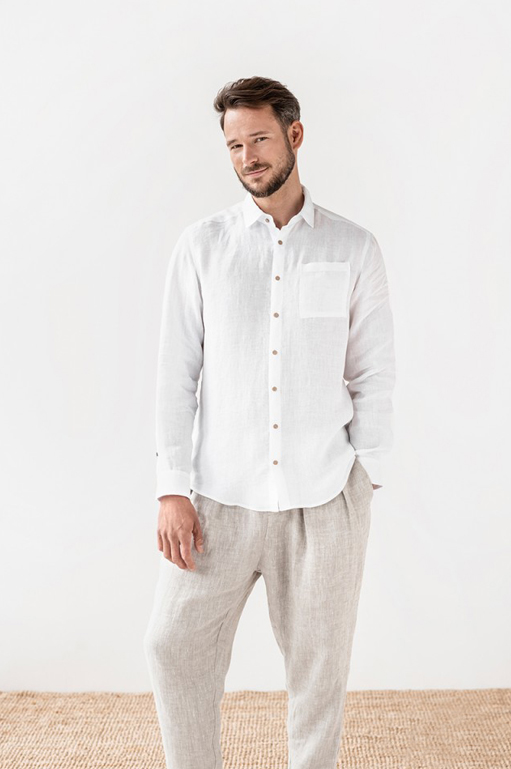Top Reasons On Choosing Hemp Clothing
Wiki Article
What Are The Environmental Benefits Of Low-Impact Hemp Clothing?
Low impact fabric hemp clothing offers a variety of environmental advantages in comparison to clothing made of synthetic fibers and cotton. Here are some of the major environmental advantages of hemp clothing: Sustainable farmingThe hemp crop is sustainable. Hemp is a highly sustainable crop. Hemp grows fast and uses less water, pesticides and herbicides than other plants. Hemp thrives in all climates. It also is able to adapt to soil types.
Hemp requires less water in general than cotton, a crop well-known for its excessive consumption. It makes hemp clothes a more efficient option in terms of water.
Hemp can be cultivated without synthetic pesticides, herbicides, or other chemicals. This helps reduce the environmental impact of chemical agriculture.
Soil Health Hemp cultivation can improve soil health due to the deep roots system, which helps prevent compaction and erosion of soil. It can also make the soil fertile for future plantings.
Hemp is biodegradable. It is able to break down naturally over time and helps reduce the amount of textile waste. Synthetic fibers, such as polyester, can take up to a few hundred years before decomposing.
Lower Carbon Footprint - The production of hemp fibers leaves generally less carbon footprint when compared with synthetic materials. Furthermore, hemp is able to absorb carbon dioxide throughout its growth, and serve as an carbon storage.
Hemp clothes can last many years. Hemp clothing of high quality can last many years. This eliminates the necessity to replace it often and also waste.
Hemp plants are naturally intolerant against pests. This reduces the need for pesticides.
Hemp offers a broad range of uses in textiles such as bags, clothing, accessories and many more. It is an eco-friendly, versatile option for textiles and fashion.
Regenerative Agriculture. Some sustainable farming practices include hemp in regenerative farming systems, which aim improving and restoring ecosystems while producing crops. It could have positive effects on the environment.
The dyeing process, transport, and consumer behaviours all play a role in the overall sustainability. Like any other business, there will be different methods of production and standards. This is why it's crucial to find organic hemp clothing or certified hemp clothes. This will provide the highest environmental benefits. Read the most popular hemp clothing advice for site examples including 100 hemp t shirt, jungmaven t shirt, hemp button down shirt, hemp active wear, patagonia hemp pants, hemp jeans mens, hemp textiles, hemp hoodie, afends jesse dress, hemp jeans and more.

How Do Hemp Fibers Help On Carbon Sequestration, Sustainability And Crop Rotation?
Carbon Sequestration Hemp fibers provide numerous environmental benefits which include sustainability, crop rotation, and carbon sequestration.
Hemp has a rapid growth rate. It matures between 70 to 120 days, based on the hemp type and the growing conditions. During the rapid growth phase hemp is able to absorb carbon dioxide from the air through photosynthesis. Carbon uptake is a major contributor to carbon sequestration and decreasing CO2 emissions from the air.
Hemp's high biomass production is well known. The plant's dense and tall foliage produces a significant amount of organic materials. The biomass can be used for the production of organic carbon in soils, or for other applications.
Sustainability:
Hemp crops need less herbicides and pesticides when compared to other crops, like cotton. The hemp's natural resistance to a variety of diseases, pests and weeds decreases the need of chemical interventions. Organic hemp farming is a sustainable method of growing hemp because it does not use synthetic chemicals.
Hemp is a great water-efficient crop in comparison to other crops that require a lot of water, such as conventional cotton. This makes it more durable in areas with limited water resources.
The deep root system of hemp improves the health of soil. Its roots help reduce soil runoff and stabilize the soil structure, preventing soil erosion. Hemp farming can increase soil microbial activity, thereby improving soil fertility and nutrient cycle.
Hemp can be incorporated into crop rotation systems. Crop rotation refers to the practice of switching between various crops on the same field. This can help break pest and disease cycles, reduce soil depletion, and improve soil structure. Hemp's role in crop rotation can contribute to sustainability.
Crop Rotation
Hemp plants can be rotated with other crops like grains, legumes and even vegetables. Diversification is important for maintaining soil health, while reducing the chance of pests or diseases that are specific to particular crops, as well as encouraging a balanced nutrient cycle.
Hemp’s deep roots penetrate and aerate soil, reducing compacting and increasing water infiltration. The improved soil structure after a hemp crop benefits the subsequent crops.
Summary- Hemp fibers are beneficial to soil quality, are suitable for crop rotation and can improve carbon sequestration as well as sustainability. They achieve this by the rapid growth of biomass, minimal chemical use as well as their water efficiency and compatibility with crop rotation systems. The hemp fibers produced by this sustainable, regenerative farming method can be a fantastic choice for textiles. Follow the top rated hemp clothes for more tips including jungmaven clothing, hemp long sleeve shirt, 100 hemp shirt, hemp t shirt mens, hemp shirts, 100 hemp clothing, hemp trousers, hemp shorts mens, patagonia double knee pants, hemp jeans and more.

What are the major differences between bamboo and hemp fibers?
Two distinct fibers, bamboo and hemp, are used for the production of textiles. Each one has its own characteristics and unique particularities. These are the main differences between bamboo and hemp fibers. Plant Source-
Hemp fibers originate from the outer bast fibres in the stalks. Hemp has been utilized for a variety of reasons over the years. It is a rapidly growing multi-purpose plant.
Bamboo fibers can be made from the pulp produced by the bamboo plant. Bamboo is a grass that grows rapidly. species known for its rapid renewal and long-term sustainability.
2. Fiber Characteristics
Hemp- Hemp fibres are recognized as strong and durable. They are among the strongest natural fibers that soften after washing which makes them ideal for textiles that last a long time.
Bamboo- Bamboo is a silky, soft fiber. They are softer and less sturdy than hemp, but are loved for their softness and comfort.
3. Texture, Feel and Look-
Hemp- Hemp has a slightly rough texture, particularly when it is in its natural state. It can be comfortable but has a different texture to bamboo.
Bamboo is soft and silky smooth. It's been described as having the feel of cotton and silk.
4. Dryness and Breathability-
Hemp- Hemp fabrics are naturally moisture-wicking. This helps with improved air circulation and they also absorb water. They are a great way to keep cool in hot weather.
Bamboo is also very ventilated, and it also wicks away water. They also have micro-gaps which increase their ability to regulate moisture and temperature, ensuring you are comfortably in any weather.
5. Environmental Impact-
Hemp Hemp can be considered an eco-friendly fiber because of its fast growth rate, its low requirements for water, and its resistance against insects. These attributes make it less necessary to use herbicides or pesticides. It can also sequester carbon from the atmosphere throughout its growth.
Bamboo is known for being ecologically sustainable. It is very robust, it grows quickly and requires only a tiny amount of water. Moso is one of the bamboo varieties that is most sustainable.
6. Processing-
Hemp- Hemp requires extensive processing in order to separate its outer bast fibers (outer woody core) from the woody inner fibers. The process may involve decorations, retting and mechanical separation.
Bamboo- Bamboo Fibers can be obtained via a chemcial process called the viscose/rayon process. This involves chemically breaking down bamboo pulp. Although this can cause environmental concerns if it is not managed responsibly, some bamboo textiles utilize closed loop systems to minimize chemical waste.
7. Versatility-
Hemp- Hemp fibers are versatile and can be used in a range of applications, including clothes, textiles, paper construction materials, and much more.
Bamboo- Bamboo is mostly used to make clothing and textiles. However, it could also appear in other products like bed linen and towels.
Both bamboo and hemp are distinct and offer sustainability advantages. It depends on what qualities you are looking for in a product, and how environmentally conscious you are. View the best bamboo clothes for website info including bamboo boxer shorts, bamboo ladies pants, bamboo tee shirts, bamboo t shirts mens, bamboo exercise clothing, bamboo womens shirts, bamboo bed clothes, bamboo ladies clothing, bamboo fitness clothing, bamboo newborn clothes and more.
